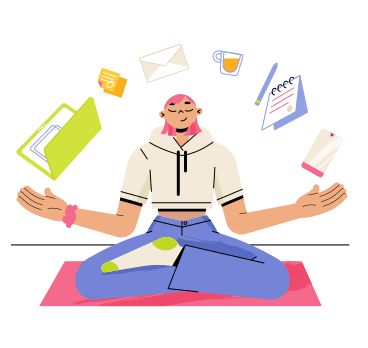Wondering how to start a pet blog in 2024?
Well, the pet industry is booming, according to the American Pet Product Association, about 86.9 million households in the United States own a pet, and pet ownership has increased from 56% to 68% in the last 30 years.
The global pet market size crossed $232 billion in 2020, mainly due to the COVID-19 lockdown, and is expected to reach a 6.1% CAGR in 2027.
With the pet care market poised to reach $350 billion by 2027, there’s never been a better time to start a pet blog.
Starting a pet blog allows you to tap into this highly engaged, passionate audience.
A pet blog also opens up various monetization opportunities through affiliate marketing, display ads, sponsored posts, and selling your own pet care products or services.
In this guide, we will discuss “How to start a pet care blog in 2024”, from choosing a niche to monetization strategies.
Let’s dive in!
Table of Contents
Why Start a Pet Blog?
Before we get into the specifics, let’s look at some of the key benefits of pet blogging:

- Share your passion for pets – Pet owners are always looking for knowledge about training, health, food, breed info, and more. A pet blog allows you to share your own experiences with pets.
- Educate and inform – As an authority in the pet space, you can create content that entertains and educates pet owners around the world.
- Build a community – Engage with fellow pet enthusiasts through your blog content, social media, and email newsletters.
- Establish yourself as an expert – Demonstrate your knowledge through helpful blog posts, establishing yourself as a thought leader.
- Make money blogging – Successful blogs can make money through ads, affiliate marketing, sponsored posts, ebooks, and more.
- Work from anywhere – Pet blogging can be done from anywhere with an internet connection, giving you location independence.
Clearly, launching a pet blog has some very appealing benefits. As long as you remain passionate about the topic and put in the hard work, you can go far with a blog in this niche.
Now let’s go over the steps to start your own pet blog.
How to Start a Pet Blog and Make Money from Pet Blogging?

Step 1: Choosing a Pet Blog Niche and Topic

The first step to pet care blogging is identifying your niche and topic focus.
Here are some effective strategies for choosing a specific, profitable blog niche for your pet blog:
Focus on your pet’s passion
What types of pets do you have the most experience and passion for? Are you a dog person or a cat person? Or maybe you’re into birds, reptiles, or other exotic pets. Build your blog around your own interests and knowledge base.
Consider broad pet categories
Some broad niches like “dogs” or “cats” allow you to appeal to a wide swath of pet owners. But you may want to narrow your focus further.
Go specific
Choosing a specific pet breed or type of animal allows you to really become an authority in that niche.
Consider focusing your pet blog on just golden retrievers, Siamese cats, bunnies, or bearded dragons.
Think about pet activities
Activity-based pet blog niches can also be very engaging. Consider training, grooming, health, nutrition, toys/gear, adoption, or travel.
Combine your niche interests
You can blend animals and activities to create a niche like “cat grooming” or “training rescue dogs.”
Do keyword research
Use Google’s Keyword Planner and other tools like;
- Google Trends
- Semrush
- Long Tail Pro to find profitable, low-competition keywords and topics in the pet space. This can help guide your niche selection.
No matter which niche you choose, focus on providing high-quality, in-depth content that helps answer people’s pet-related questions and engages your target audience.
Here are some popular pet blog niche examples:
- Dog training and behavioral tips
- Cat health and nutrition
- Exotic pets like reptiles, birds, small mammals
- Pet adoption and rescue
- Pet photography and crafts
- Pet fashion and accessories
- Pet-friendly travel destinations
Once you’ve chosen your niche, it’s time to start setting up your pet blog!
Step 2. Setting up Your Pet Blog
Follow these key steps to get your pet blog up and running:
1. Choose a Domain Name

Your domain name is the URL that visitors will type in to access your site. For a pet blog, you’ll want to choose a name that reflects your niche and is short, memorable, and easy to spell.
Here are a few tips for choosing the right domain for pet care blogging:
- Include your main keyword Such as “dogtrainingblog” or “persiancatsguide.”
- Be specific – A name like “labradortrainingtips” is more targeted than “dogtrainingblog.”
- Use separators for clarity Such as “cats-and-kittens.com” or “yourpetinfo.net.”
- Get creative – Play on words like “petropolitanblog” or “pawsomeideas.”
- Check availability – Use a domain search tool to see if your desired name is available.
- Consider extensions like .com, .net, or .org – .com tends to look most professional.
2. Choose Web Hosting

Next, you need web hosting for your pet blog so that people can access your site online. When it comes to choosing a hosting provider, here are the key factors to look for:
Fast uptime and page speed
You want to avoid slow loading times that will frustrate visitors. Look for at least 99% uptime and decent page load speeds.
Reliable security
Look for hosts with regular updates and security monitoring to protect your site.
24/7 customer support
Inevitably issues will come up, so make sure your host offers around-the-clock support.
Easy scalability
As your traffic grows, you want a host that allows smooth upgrades in storage, bandwidth, and other resources.
Affordable pricing
Look for high-value plans to maximize features while minimizing cost, like Bluehost’s shared hosting plans starting at just $2.95/month.
For pet blogs, we highly recommend using Bluehost as your hosting provider. Here are some of the advantages:
- Provides fast, secure, and reliable hosting for over 2 million websites
- Free domain name for the first year
- 24/7 expert support available via phone, chat, or email
- Easy one-click WordPress installation
- 30-day money-back guarantee
- A free SSL certificate
- Scalable hosting plans
- Custom WP Themes
Follow these steps to get started with Bluehost:
1. Go to www.bluehost.com and click “Get Started”
2. Choose your hosting plan (for new sites, the Basic $2.95/month is a great starting point)
3. Set up your domain.
4. Create your account.
6. Choose your hosting package.
7. Enter your payment information.
8. Hit the “Submit” button.
Once your account is ready, you can immediately install WordPress and get your pet blog online!
3. Install WordPress

The best platform for starting a blog is WordPress – it powers over 40% of all websites. The good news is Bluehost makes it simple to install WordPress with just a few clicks.
1. Log in to your Bluehost control panel.
2. Click the Hosting tab. It is available from the side navigation.
3. Click “Install WordPress”.
4. Enter a name for your site if you want.
5. Type your domain name. Or choose to use a temporary domain.
6. Click “Continue”.
7. Bluehost will now install WordPress automatically.
When it’s done, click “Log in to WordPress” to access your site’s dashboard.
That’s all there is to it! With just these few simple steps, your WordPress site will be installed and ready to go.
WordPress will allow you to easily create posts, pages, and categories, interact with site visitors, and handle all your content.
It also has thousands of free and paid themes and plugins available to customize your pet blog and add advanced functionality.
Step 3. Choose a Pet Blog Theme
Your theme controls the overall look, layout, and design of your WordPress site.
You’ll want to pick a theme that reflects your pet blog niche and allows you to showcase your brand.
Here are some top theme options for pet blogs:
1. GeneratePress

GeneratePress is a fast, lightweight WordPress theme great for blogs. With its simple design, you can easily customize the theme settings like colors, fonts, layouts, and more.
Some of the advantages of GeneratePress for pet blogs:
- Over 5 million downloads
- 100,000+ happy customers
Performance-Focused
- Free and open-source
- Focuses on speed, usability, and accessibility
- Only 7.5kb page size for fast performance
- Zero dependencies
Take It To The Next Level With GeneratePress Premium
- Hundreds of customization options
- Professionally designed starter sites
- Block-based theme building
100% PageSpeed Scores
- Lightweight code helps achieve perfect page speed
Unrivaled Support
- The support team answers 98% of requests on the same day
Compatibility
- Works seamlessly with all top plugins and page builders
Accessible For All
- Follows WCAG 2.0 accessibility standards
- Supports over 20 languages for a global audience
GeneratePress Pricing
- $59 per year
- $249 one-time fee
2. Astra

Astra is another popular WordPress theme designed for speed and customization. It’s a good minimal theme foundation to build your pet blog on.
Benefits of Astra for pet blogs:
- Pre-built website templates
Customize Without Code
- Use WordPress Customizer to edit the design
- No coding knowledge needed
Made For Page Builders
- Option to remove title and sidebar
- Full-width template for total design flexibility
Superfast Performance
- Extremely lightweight for speed
- Unmatched performance
Customize Everything
- Visual theme customizer to edit the design
Layout Settings
- Manage layouts for all elements
Header Options
- Multiple built-in header layouts
- More options with Pro
Colors & Typography
- Customize colors and fonts
Unparalleled Performance
- Optimized code for speed
- Under 50KB size
- Loads in 0.5 seconds
Astra pricing
You may also opt for the Astra lifetime deal and save huge on your purchase.
- Astra Pro: $47/year
- Essential Bundle: $137/Year
- Growth Bundle: $187/year (including pro features)
Always look for modern, mobile-friendly designs that are easy to customize.
Step 4. Customize Your Blog Design & Branding

After installing your theme, it’s time to customize the design and branding elements for your pet blog.
In your WordPress dashboard, Click the “Appearance > Customize” menu.
Here you can tweak things like:
- Site title and tagline
- Logos, icons, and favicon
- Colors, fonts, and spacing
- Page layouts
- Headers, footers, menus
- Sidebars and widget areas
Take the time to personalize your blog’s design to appeal to your target pet audience and reflect your brand image.
You can further tailor your site by installing WordPress plugins. Useful free plugins include:
- Contact form plugins like WPForms
- SEO plugins like Rank Math
- Popup plugins like OptinMonster
- Security plugins like Wordfence
- Image optimization plugins like Smush
- Caching plugins like WP Rocket
The right plugins can add helpful functionality fast. Browse the WordPress plugins directory to find options tailored to pet blogs.
Now let’s move on to the most critical part of a successful blog – creating awesome content.
Step 5. Craft Compelling Pet Blog Content

No matter how beautiful your blog looks, it needs amazing content to attract and engage readers. So you’ll need to put on your writing hat!
Here are some tips for creating compelling pet blog content:
- Write about your interests – Stick to pet topics that truly interest YOU. Your passion will show through in your writing.
- Provide value to readers – Focus on educating and informing pet owners with your posts. Share your expertise through tips, how-to’s, and actionable advice.
- Have a consistent publishing schedule – Post new content frequently, ideally 1-2 times per week minimum. This gives readers an incentive to return.
- Mix up your content formats – In addition to regular blog posts, create pet care videos, infographics, podcasts, and more. Variety is engaging.
- Include visuals – Break up walls of text with relevant photos, graphics, charts, and videos to keep readers hooked.
- Write SEO-friendly content – Research keywords using tools like SEMrush and target long-tail phrases in your posts. Use keywords naturally within your content.
- Write long-form in-depth content – Aim for long, detailed posts between 1,500 – 3,000 words. These tend to perform best with both readers and search engines.
- Check for grammar/spelling errors – Read over each piece carefully or use a tool like Grammarly before hitting publish.
- Promote on social media – Link to each new blog post on your Facebook, Instagram, Twitter, and Pinterest accounts. Encourage shares.
If you’re not experienced in writing about pets, invest time in researching your topics. Read veterinary sites, studies, other pet blogs, etc. to expand your knowledge.
The more value you can offer readers, the more your blog will grow!
Now let’s look at some effective ways to promote your new pet blog and start making money.
Step 6. Promote Your Pet Blog

You’ve put in the hard work to launch an amazing pet blog. But without promotion, no one will find and read your content. One of the best organic ways to promote your blog post is through SEO.
SEO (search engine optimization) helps people discover your blog through Google and other search engines.
Key aspects of SEO include:
- Keyword research – Find topics people search for around your niche using tools like SEMrush and Google’s Keyword Planner.
- Target keywords in content – Optimize your posts for specific keywords, including them naturally in the title, headers, body, etc.
- Get backlinks – Build quality backlinks from other sites through guest posting, partnerships, etc. Links signal authority to search engines.
- Create sitemaps – XML sitemaps tell search engines about all the pages on your site to index.
- Optimize speed – Faster sites rank better in search, so optimize images, enable caching, etc.
- Add alt text – Describe images using alternative text for SEO benefits.
With solid SEO fundamentals, your pet blog can gain organic search traffic over time.
Step 7. Monetizing Your Pet Blog

Once you’ve launched your awesome pet blog, it’s time to start monetizing it! Here are some of the best ways to make money from a pet blog:
1. Affiliate Marketing
Joining pet affiliate programs is a great passive income stream for blogs.
You simply share affiliate links to relevant pet products, and earn a commission when readers click and make a purchase.
Quickly inspect our recent affiliate earnings, a generous sum of $3500, all from a single affiliate network.

That’s certainly remarkable, don’t you think?
Some top pet affiliate programs to consider:
1. Hepper Cat Affiliate Program
- 12% commission rate
- $60+ average order value
- Commission on all referred sales
2. Petco Cat Affiliate Program
- 2% average commission rate
- 30-day cookie duration
- Free and easy to join
3. Ollie Affiliate Program
- $60 average commission per order
- 30-day cookie duration
- Free and instant joining
4. Holistapet Affiliate Program
- Up to 35% commission per sale
- 30-day cookie duration
- Access to brand promotions
- High average order value
When promoting affiliate products as a pet blogger:
- Only recommend products you genuinely would use yourself
- Disclose affiliate relationships
- Link to products organically within relevant content
- Share your first-hand experience with products
- Use images, videos, and coupon codes when available
In time, affiliate income can become a significant source of revenue for your pet blog.
2. Display Advertising

Another way to monetize your blog is by joining an ad network like Google AdSense and placing ads on your site.
Ads can take the form of banners, text links, videos, and more. You’ll earn money when visitors click, view, or interact with the ads.
Some advantages of display advertising:
- Requires very little work to maintain once implemented
- Earn revenue from ads passively
- Ad performance improves as your traffic grows
- A wide range of ad formats and placements are available
To get started, apply for an ad network like AdSense, Mediavine, or Media.net. Place ads in sidebars, within content, or other optimal positions.
Be sure to follow the network’s policies and optimize your ad placements over time.
While ad revenue may be small at first, it can grow steadily with your pet blog traffic.
3. Selling Pet Products or Services

Once you establish yourself as a pet expert, you can create and sell your own pet-related products, services, or subscriptions.
Some options include:
- Packaged ebooks or online courses
- Customized pet care plans
- Private advice or consulting
- Pet sitting or dog walking
- Exclusive membership site access
- Pet accessories you design
- Pet-themed merchandise like t-shirts
Make sure to deliver excellent value, tap into your audience’s needs, and focus on products you can competitively position. Integrate your own offerings seamlessly into your blog content for promotion.
4. Sponsorships & Brand Partnerships
As your pet blog grows, you can attract sponsors interested in reaching your audience.
Pet brands may pay you a sponsorship fee to create content featuring their products. You can also partner with brands long-term for ongoing campaigns and affiliate promotions.
- When seeking sponsors, be selective about which brands you work with.
- Make sure they’re relevant to your audience and of high quality. Clearly disclose paid partnerships as required by law.
With a sizable, engaged audience and high-quality content, you can attract sponsors who want their brand associated with yours. This provides a nice source of recurring revenue.
5. Paid Advertising
Once you begin building an audience, you can amplify your blog traffic and visibility through paid advertising:
- Promote your blog posts and products through Google Ads and leverage pet-related keywords.
- Run social media ads on platforms like Facebook, Instagram, Pinterest and Twitter. Target pet owners with relevant posts.
- Distribute your ads and content via native ad networks like Taboola and Outbrain.
- Sponsor influencer posts within your niche to expand your reach to engaged pet lovers.
Paid advertising requires upfront investment, but allows you to scale your impact exponentially. Reinvest some of your pet blog revenue into select ads to grow faster.
6. Pet Blog Membership Sites
Consider offering exclusive membership access to your blog content for a monthly/yearly fee. This recurring revenue can add up fast.
Pet blog memberships work well when you:
- Produce highly specialized, premium content
- Cultivate a loyal audience of followers
- Offer membership perks like access to you for advice
- Provide ways for members to engage with each other
Building membership site functionality into your WordPress site is easy with plugins. Just be sure members feel it’s well worth the investment.
Pet Blog Examples to Model
Looking for some pet blog inspiration? Here are a few popular examples in the industry:
1. Dogster
Dogster provides an extensive library of dog articles spanning health, nutrition, training, adoption, and products. They take a fun, engaging tone while offering real expertise.
2. Catster
Sister site to Dogster, Catster features cat-focused articles, advice, humor, and community. From cat breed profiles to feline behavior insights, it’s a top destination for cat lovers.
3. Pet P.L.A.Y
Pet P.L.A.Y is a blog that posts articles about dogs covering topics like safety, illnesses, products, and more. They also feature guest posts from other pet bloggers. P.L.A.Y sells luxury, eco-friendly pet beds, toys, and other products online and in stores.
4. The Good Dog Blog (SitStay.com)
The Good Dog Blog on SitStay.com has articles on dog training, products, health issues, and more, written and reviewed by vets. SitStay.com makes money selling various dog products, which they also promote on their blog.
5. Adopt a Pet
Adopt a Pet is a blog supporting the Adopt a Pet website that matches shelters, rescues, and owners with potential adopters. They have ads and a Facebook presence.
6. The Dogington Post
The Dogington Post shares dog news, reviews, info, and funny social media posts for dog lovers. The name spoofs the Huffington Post.
7. The Conscious Cat
The Conscious Cat has personal stories and info on topics like escaping cats, leash training, working cats, and more. They make money through affiliate links, especially to Amazon.
Whatever your pet niche, these blogs demonstrate the importance of high-value content, strong branding, site functionality, and pet community engagement. Use them for ideas as you grow your own pet blog.
FAQs
Here are the most commonly asked questions about a pet care blog you may find worth reading.
Yes, the multi-billion dollar pet industry is extremely lucrative. Pet owners are highly engaged and spend readily on products/services for pets.
Choose a specific pet niche, create helpful tips/advice based on experience, include visuals/videos, and promote on social media.
Provide training tips, health/nutrition guidance, product recommendations, and advice to help owners properly care for pets.
Use affiliate links, display ads, sell your own products/services, run sponsorships, and build a membership site.
Sell pet products, provide services like grooming/walking, create informational products, run pet sitting or doggy daycare, etc.
Yes, the pet fashion industry is growing. Pet owners enjoy buying clothes, costumes, and accessories for pets. Focus on quality materials and cute, unique designs.
Also Read:
- Event Blogging: Unlocking the Potential to Make Money Online in 2024
- Product Review Blogger: Launching a Successful Product Review Blog in 2024
- How to Start a Fashion Blog and Make Money Online in 2024
- Weight Loss Blogging: Make Money Online in 2024
- How to Start a Micro Niche Blog and Maximize Profits in 2024
- How to Start a Travel Blog and Make Money From It in 2024
- How to Start a Food Blog and Make Money Online in 2024
- How to Start a Soccer Blog and Make it Profitable in 2024
- Top 16 Blogging Mistakes To Avoid in 2024 (For Amateur Bloggers)
- Benefits of Blogging: 9 Reasons You Should Have a Blog in 2024
- The Future of Blogging in 2024: Trends and Predictions
Final Thoughts on Pet Care Blogging in 2024
Starting and growing a successful pet blog does take time and effort.
But by zeroing in on a specific niche, creating valuable content, optimizing for SEO, and tapping into various monetization methods, you can establish yourself as an authority in the space.
With over 86.9 million pet-owning households in the U.S. alone, there’s ample opportunity to build an audience and business around our furry friends.
While it won’t happen overnight, your passion for pets can absolutely translate into profits with the right strategy and execution.
So whether you love dogs, cats, birds, reptiles, or anything else, there’s never been a better time to share your expertise with fellow pet enthusiasts worldwide.

